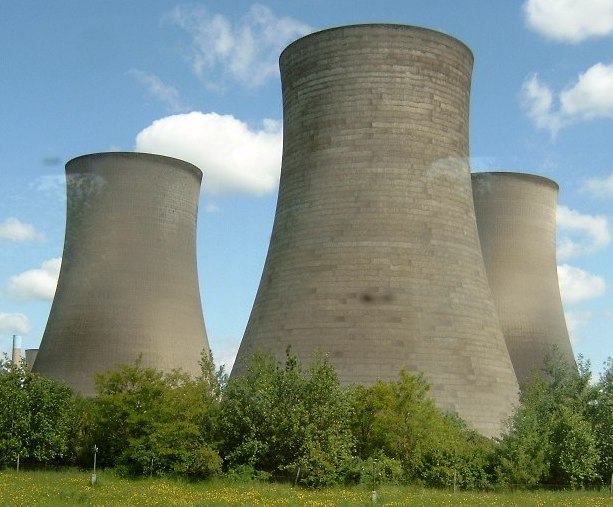Engine Efficiency
An engine turns heat into work. There are lots of types of engine, for example: steam, petrol, diesel, jet, rocket and gas turbine. No matter what type of engine you consider the efficiency is always limited by the following equation [1, 2]:
Where Th is the temperature of the hot side of the engine, Tc is the temperature of the cold side of the engine, and the temperatures are measured in Kelvin. (The temperature in Kelvin, K = C + 273.15, where C is the temperature is Celsius. Ice point of water = 0 C, steam point of water ~ 100 C, and room temperature ~ 20 C.)

The efficiency equation explains the seemingly strange phenomenon of cooling towers. To make the engine efficient, you have to make the operating temperature hot, and you need to cool the exhaust. The best coal fired power stations use high pressure steam to reach an operating temperature of Th=600 C ~ 873 K, the cooling towers reduce the exhaust temperature to about Tc=30 C ~ 300K, giving a maximum possible efficiency of about 66%. In practice the best coal fired powered station has achieved an efficiency of 47%.
Things which disobey the efficiency equation
The efficiency of any type of engine can never exceed the efficiency defined by the equation no matter what you do. The maximum efficiency is not limited by a technical constraint, but by the Second Law of Thermodynamics. However, not everything is an engine.
The equation only applies when heat (a disordered form of energy), is turned into work (an ordered form of energy). So if you start with ordered form energy you can get more efficiency from the process. For example hydroelectric power, fuel cells and batteries are not constrained by the equation.